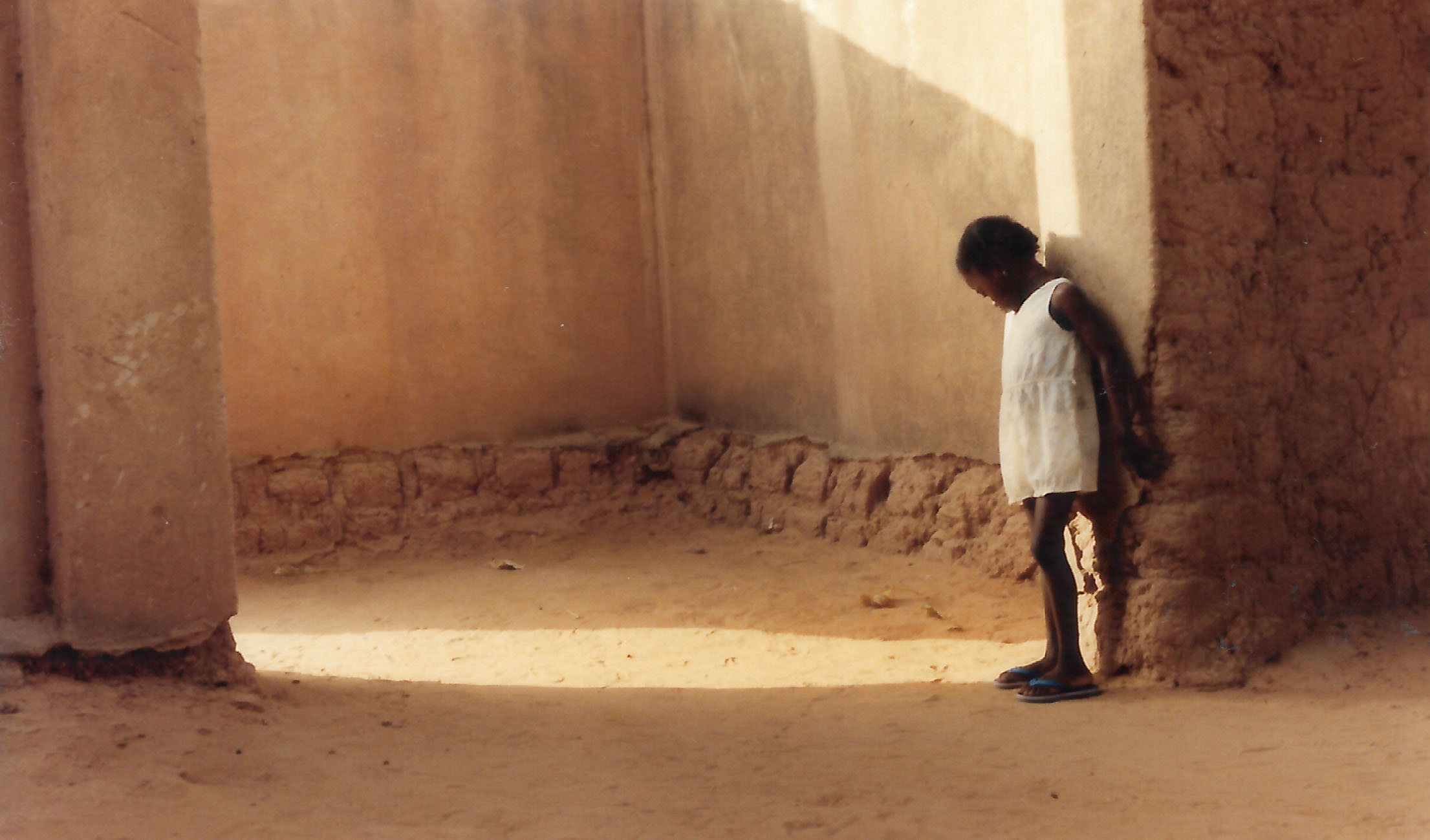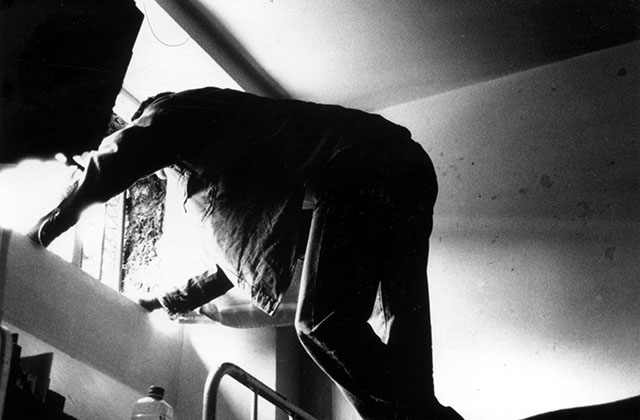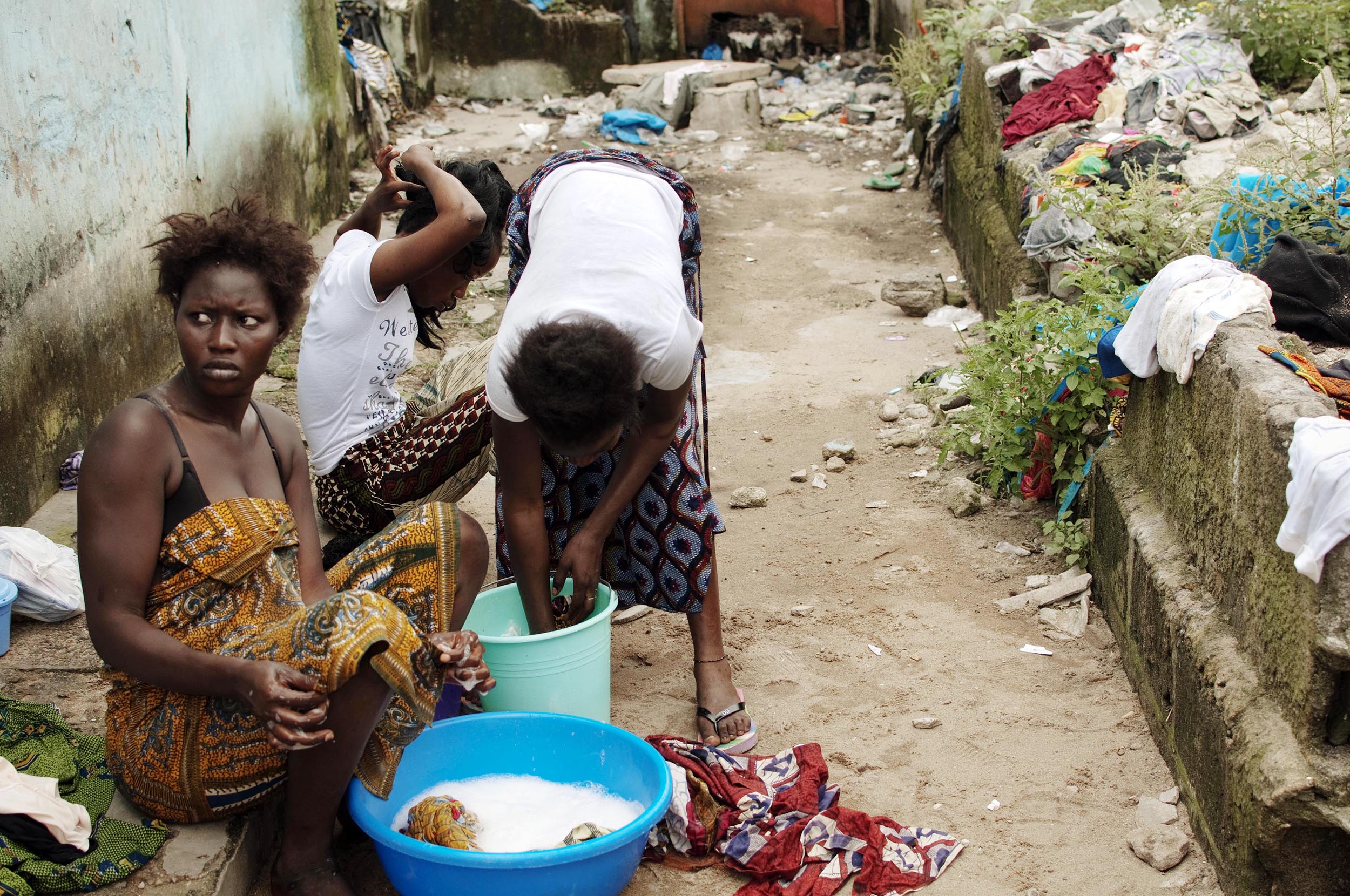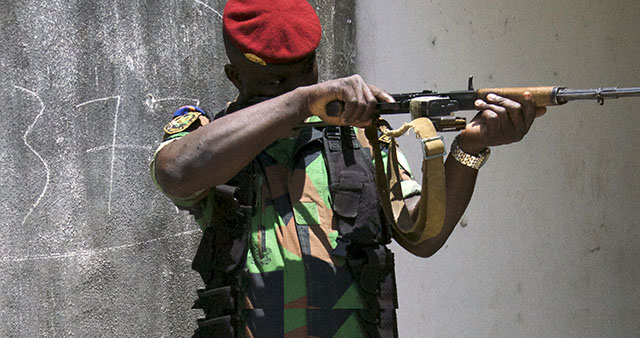
FIRST STEPS
LIMINAL ZONES

Le Bardot ghetto — San-Pedro
I was commissioned by the Mission du Patrimoine (Ministry of Culture) to make a film about senior citizens in the Cévennes in the South of France. This triggered a desire to look into worlds on the fringes of mainstream society, such as those of my characters, the youngest of whom was 81. Subsequently, I became interested in other forms of relegation, harems, prisons, ghettos: ‘non-places’ to use Michel Agier’s notion.
My aim was not to explore the reasons for exclusion but the intimate scaffolding and personal initiatives behind them, and to raise the question of escape – real or fantasised – from these closed spaces. Erving Goffman [Asylums, 1968] shows that if we focus on the patients own vision of a psychiatric institution, skills emerge and the many apparently senseless plots become legible.

Bel Air ghetto – In front of a prostitute hotel – Abidjan
The question of ‘non-places’ raises the issue of emancipation, which has interested me in the course of my various investigations. In the case of the slave, Malik Ambar, who became Regent Sultan of a kingdom in India, whose course he profoundly altered, and with the attempted rapid rise of young football players in Abidjan who end up carrying only the dreams of their parents and trainers. But in doing so, they find a way out of their “misery”.
WITH AND WITHOUT A SOCIETY THAT EXCLUDES

Tales and Tallies of the Court – Gateway to the Harem
Although the areas I have studied refer to different geographies, my investigations have been guided by the same questions. How do relegated human beings stand up to the emptiness and rebuild new relations when their bodies are immobilised? With what new data about space and time? With what imaginary worlds? What rituals and objects are reinvested with meaning? Always in relation to and against a society that excludes.

So Blue so Calm – La Santé prison. Paris
In an effort to shift away from a discourse of victimhood, I have focused on thinking about the subjective content of experience, centred on the question of self-narrative mixed with identifying metaphors, often leading to action or displacement.
This work, which has been captured in writing, photography and film, has been translated into projects – films and writings – that are posted on this website.
- Social confinement
Reflection of Life
— Elderly people in France outside the labour norms
Tales and Tallies of the Court
— Harem women in Niger outside the dominant gender.
So Blue so Calm
— Inmates of La Santé prison outside the law.
Bronx Barbès – After the ocean
— Ivorian ghetto men and illegal migrants outside the law.
Go Girls forgotten – Go Girls refound
Little go girls – Casa des Go
— Young women at odds with the law.
- Emancipation
Malik Ambar
— Abyssinian slave turned king in 16th/17th century India. Book publication
Football Kids
— Young players facing the first obstacles of Ivorian football.
SENSITIVE AREAS

In the 1990s, the term “sensitive areas” came into use as more and more researchers were confronted with situations of violence, often involving people working illegally. I became familiar with these conditions as soon as I started going into men’s and women’s prisons, urban ghettos, or among hookers and illegal immigrants.
Ethnologists are always looking for a place to justify their presence. In these “non-places” they have to find a shielding narrative that enables them to act with confidence, in the knowledge that the initial agreements are never guaranteed. There is no escaping the intrinsic lability of these worlds without institutions.
There have been times when I’ve fled in a stoned car or found myself pinned to the ground with a sawed-off shotgun in the back of my neck and all my belongings stolen… Errors of judgement on my part. Either I’d got tired of waiting and gone to a ghetto with a sonny who wasn’t up to it. Or else I wanted to finish a night tour instead of stopping… And so on.
I knew the robbery scenarios by heart. I’d collected all the modus operandi of the ghettomen and their justifications. I had a strange sense of familiarity, of being insider and outsider at the same time.
Getting closer. No longer afraid. That’s the advantage of time-based research; above all, to be able to come back again and again.


Ghetto boys who joined the army after taking part in militias during the post-election crisis
Extract :
- Question – “ As someone who studies sometimes dramatic situations, what do you actually do to improve things?
- Ch. Geffray – In any case, as soon as there is truth, there is effect… ”
The prospect of making a feature-length film has often been a door-opener for me. Women from harems in Niger who thought they were uninteresting found their self-esteem enhanced by the reflected image. At La Santé prison in Paris, an annual workshop helped the film to win the approval of the inmates, who saw it as an opportunity to create in a ‘de-singularising’ world. The young Abidjan ghettomen with their dreams of American blockbuster heroes had no trouble standing in for Will Smith or Wesley Snipes.
DIVERSE SITUATIONS
This journey has involved a variety of confinement situations. Some were legal, such as the harem in Niger, a prison or a senior citizens’ organisation in a Western country. Others arose as spontaneous creations on the fringes of illegality: urban ghettos of young people in Abidjan, clandestine migration, urban prostitution of underage girls in Morocco and Côte d’Ivoire.

When you enter these places, life may seem void at first glance. The outside eye eventually becomes accustomed to the darkness and discerns a fleeting gesture, cryptic spaces where things are happening, meaningful silences, small resistances that gain strength through persistence.
I’m interested in the ability of people to stand out from the crowd by seeking moments of emancipation in defiance of the majority. But feelings of uselessness, petty self-hatred and the awareness of not being recognised as others reinforce self-destructive tendencies. Hubris and annihilation intertwined.